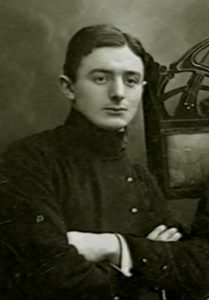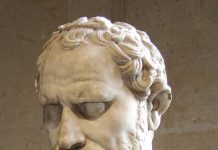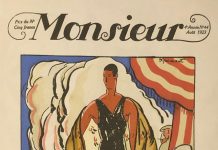Having just watched the Soviet science fiction classic Solaris, from 1972, I was wondering what insights Annette Michelson might have been able to offer the world about this deeply psychological trip (and it really was a trip, without psychedelic drugs!).
It is based on a 1961 novel by Stanislaw Lem, and directed by Andrei Tarkovsky. Although none of this is mentioned in the book under review here, there is an important link with a film and director that is mentioned by Malcolm Turvey, Professor of Film Studies at Tufts University, in his Foreword. (The book is edited by art critic Rachel Churner, who is giving us these collected essays by the late Annette Michelson). Before production of Solaris began, Tarkovsky saw 2001: A Space Odyssey and was unimpressed with how director Stanley Kubrick seemed more fascinated by technology than the humans in the film. Michelson, in her analysis of 2001, wrote “Viewing becomes, as always but as never before, the discovery, through the acknowledgement of disorientation, of what it is to see, to learn, to know, and of what it is to be, seeing.” For those who are not familiar with the works of Sergei Eisenstein and Dziga Vertov, the two great Russian/Soviet filmmakers who are the subject of these essays, 2001 is good entry point as it too exemplified the idea, taken up by Michelson, that “artwork can occasion reflection on philosophical topics.” As for the interlinked study of psychology that began this review, I recommend watching a 3 min 21 sec clip on YouTube, where Michelson herself quotes Walter Benjamin who states “We can psychoanalyze the world through cinema. The Soviets were very conscious of that.”
No better exposition of the concept of cinema can be found than that elucidated by Eisenstein, as quoted in this book: “Cinema is not only a solution for the problem of movement in pictorial images, but is also the achievement of a new and unprecedented form of graphic art, an art that is a free stream of changing, transforming, commingling forms, pictures and compositions, hitherto possible only in music.” Thus, it not surprising to find Albert Einstein mentioned throughout this book, as he played the violin when he was not applying his analytic mind to transforming time and space. Michelson notes that “cinema’s analytic propensities find their most concentrated and elaborate expression in the work of Rene Clair [a French film maker] and Dziga Vertov.” The author discerns that Einstein, in a 1920 speech, “offers a program for the medium’s development which anticipates with remarkable precision Vertov’s revolutionary project.” In this speech, Einstein states “The cinema seems to me to have a still more important function in giving pupils an insight into the most important branches of technical industry.”
One method by which Vertov, in his largely instructional films, does this is with the innovative use of manipulating time. In the movie Kino-Eye (1924), which I watched again while studying for this book, Vertov proposed “that it would offer ‘the theory of intervals’, the theory of relativity on the screen. Seeing that which the eye cannot see, it would function as ‘the microscope and telescope, as the negative of time’.” By showing us the process of making bread in reverse, for example, Vertov grabs by the horns what Michelson dramatically terms “cinema’s most radical resource, its most empowering parameter, that freedom of the constraints of temporality which, in the early years of the 20th century, had appeared absolute and inalterable.” Michelson’s punchline is powerful: “Looking for the ‘negative of time,’ we find it in the use of reverse motion as analytic strategy.” I was surprised she did not mention another form of negative that appears in Kino-Eye: the silhouette.
I would have liked more editorial intervention in this book. While each chapter is accompanied by footnotes and references, much is left unsaid. For example, on page 52, Michelson writes that T.S. Eliot “once remarked, in a phrase I can neither quote nor locate exactly, that we know more than the artists of the past and that they are precisely what we know.” The quote, which Churner should tell us, derives from Eliot’s 1920 book The Sacred Wood, where he wrote: “Someone said, ‘the dead writers are remote from us because we know so much more than they did.’ Precisely, and they are that which we know.”
The reader may also wonder about the relevance of two drawings of the Murder of King Duncan, drawn by Eisenstein on June 12, 1931 (he actually did 51 drawings that day in what he described as “a trance.”). The text tells us the series focused on Shakespeare’s Macbeth, but the caption for the images do not tell us they are part of this series, or that King Duncan was a fictional King of Scotland in the play Macbeth. For Shakespeare aficionados it is obvious, but…
Footnotes are often ignored, but here you will find hidden gems. For example, on page 132 is Eisenstein’s critique of D.W. Griffith’s Intolerance, my favourite silent film. As the foremost expert on the use of montage, Eisenstein rakes Griffith over the coals for misuse of an endlessly rocking cradle. It stems, he writes, from “Griffith’s misunderstanding, that the region of metaphorical and imagist writing appears in the sphere of montage juxtaposition, not of representational montage pieces.”
Obviously, there is a veritable feast of food for thought in this book, which offers us one profundity after another. Certainly, this edited work is an essential read for anyone interested in film studies, those hoping for a career in film, and more broadly Soviet studies of the 20th century and how the world – and our perception of it – has been changed by the cinema.
[Michelson (1922-2018) established the Department of Cinema Studies at New York University]
On the Wings of Hypothesis: Collected writings on Soviet cinema is $29.95 by The MIT Press.














